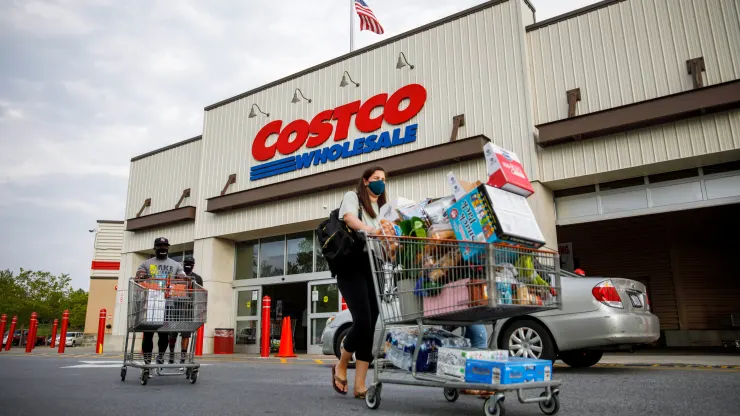Costco (COST:NASDAQ) posted fiscal second-quarter earnings results Thursday after market close that mostly beat expectations.
As consumers sought out value and moved away from discretionary spending, the wholesale retailer saw a slight miss in quarterly revenue, coming in at $55.27 billion, but up 6.5% from a year ago. Meanwhile net sales saw a 6.5% increase, to $54.24 billion, up from $50.04 billion.
Costco reported $55.27 billion in revenue and earnings per share came in at $3.30. the retailer also saw same-store sales increase by 6.8%. The retailer saw an increase in sales in the fresh food, food, and sundry categories and “weakness in big ticket discretionary items” with a drop in non-food items such as apparel, jewelry and electronics.
This is similar to results from Target (TGT:NYSE) and Walmart’s (WMT:NYSE) latest earnings. Costco CEO Craig Jelinek said on a call with investors stated “People are spending their dollars where they feel they should be spending them,”
In the U.S., sales came in slightly lower than expected, up 5.8% compared to estimates of 5.56%. Meanwhile, in Canada and internationally, Costco saw strength with same-store sales, both higher than estimates, up 9.6% and 9.5%, respectively. However, e-commerce sales were down 9.6%.
Giving an outlook into the first few weeks of Q3 FY 23, in the first four weeks of February, U.S. sales are up 3.4% and up 1.2% in Canada. For its international business, sales are up 6.5%. E-commerce sales saw a decline of -11.2% in the month of February. Last month, the company saw net sales of $17.06 billion, up 4.7% from $16.29 billion last year.
Its private label business, Kirkland Brands, is also getting a boost from inflation. In the last few months, the company saw “a bigger delta than normal” to Kirkland Brands. For Q2, the company saw a roughly 1.5% increase in sales of Kirkland Brands, specifically food penetration, compared to roughly 0.5% typically. Jelinek jokingly called it a “trade-up,” adding, “People are looking to save money, and it’s our brand, that’s great, creates loyalty.”
Its private label business, Kirkland Brands, is also getting a boost from inflation. In the last few months, the company saw “a bigger delta than normal” to Kirkland Brands. For Q2, the company saw a roughly 1.5% increase in sales of Kirkland Brands, specifically food penetration, compared to roughly 0.5% typically. Jelinek jokingly called it a “trade-up,” adding, “People are looking to save money, and it’s our brand, that’s great, creates loyalty.”
In the call with investors, Jelinek reiterated, similar to previous quarters, “It’s a question of when, not-if,” it will raise prices. He then referred to its typical time line of membership fee increases, which is every 5 years and seven months, bringing the next potential hike to … now.
Jelinek remains confident that the wholesale retailer remains on top, saying, “Our relative level of competitiveness is as strong as it’s ever been.”
This quarter, membership fees brought in $1.03 billion, up 6.2% from a year ago and a tick higher than Wall Street estimates of $1.04 billion. A Costco Gold Star membership costs $60 per year and an Executive Membership goes for $120. Costco last raised prices in June 2017.
That’s compared to Sam’s Club, owned by Walmart, which raised prices in August for the first time since 1999. That move increased annual fees to $50 from $45 for Club members and to $110 from $100 for Plus members. At BJ’s (BJ:NYSE), the basic membership costs $55 per a year and its perk rewards membership is $110.
Costco’s shares were down more than 2% in extended trading after the release. The stock is up 6.39% for the year.

